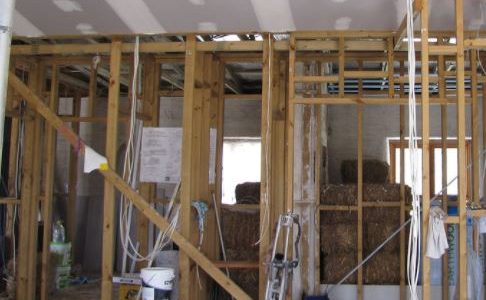
More Chinese Drywall Information
- chinese drywall
- chinese drywall, chinese drywall problems
- December 19, 2019
- What is Chinese drywall?
- What is wrong with Chinese drywall?
When was this drywall installed?
It appears that the bulk of the Chinese drywall in the United States was imported during the construction boom and after the hurricanes of 2004 and 2005. The Federal Trade Commission (FTC) has determined that most of the affected homes were built between 2003 and 2008; however, some reports have indicated that Chinese sheet rock was used in homes built as early as 1997.
Reports vary, but it seems that the first of the defective drywall was imported in 2001 and none has been imported since Chinese drywall 2008. Although the dates of import are relatively well established, the dates of install are not. It is possible that pallets of this material that had been imported prior to the ban have been distributed since 2008. With that in mind, homes built or renovated since 2008 may be affected as well. Drywall suppliers in the United States were notified that, if they disposed of any Chinese sheet rock after 2008, they were required to notify the authorities.
The combination of the housing boom and the hurricanes in Florida and the Gulf Coast depleted the supply of domestic drywall. In response, suppliers were forced to look elsewhere to meet the demands of their clients – builders and renovators. Chinese drywall was the answer, so it seemed. Without knowing, these suppliers were importing drywall that would turn out to be the largest product liability issue the construction industry has seen. Although some doubt has been cast on the innocence of these suppliers, it seems that, at least initially, these building suppliers were not aware of Chinese drywall problems.
Further complicating the process of tracing and tracking the defective drywall is the frenzied pace of construction at that time, bankruptcies that have claimed builders since the installation, and the general lack of records keeping among smaller builders and renovators. Most experts agree that it is not realistic to expect suppliers, builders, renovators, and drywall installers to produce reliable and accurate paper trails to details the installation of Chinese drywall.
In fact, large tract builders that are most equipped to document the material used in their homes could have the biggest difficulty guaranteeing what drywall was installed in what homes. These builders complete construction of dozens of homes at a time. Material is consistently “borrowed” from one home to help complete another in the same neighborhood. For this reason, drywall that is delivered to one home in the neighborhood may have been used in several others. Proof of delivery to one home does little to mitigate the concerns surrounding the neighboring homes.
This principle further compounds the problem when one considers the construction of condo projects. It is Chinese drywall nearly impossible to identify which drywall was installed in which unit. If Chinese drywall was delivered to the project, the entire condo building is suspect. Similarly, renovations are completed by smaller companies. These companies likely purchased bulk drywall to cover the work they completed at several different jobs. It is not possible that these companies can reliably identify which homes received Chinese drywall.
Similarly, builders who purchased the material from the suppliers do not seem to have known of the issues related to defective drywall. Some claim that these companies had an indication of Chinese drywall problems before reporting the problem. In fact, some builders even repaired the affected homes when they discovered the problem.
If you live in or considering the purchase of a home built between 2001 and 2008, a Chinese drywall inspection is a small cost that can protect you from the financial ruin associated with Chinese drywall.
Where has Chinese drywall been found?
Tainted drywall has been found in 37 states across the United States as well as in the District of Columbia and Puerto Rico.Chinese drywall Heat and humidity serve to exacerbate and accelerate the manifestation of the problems associated with Chinese drywall. It is likely that many homes located in areas that are not exposed to high heat or humidity have not begun to experience the issues associated with problematic drywall. Because the symptoms have not yet become evident, the issue has not surfaced in these areas. This assumption is supported by several studies that are being conducted on problematic drywall.
As a result of the effect of heat and humidity as well the huge amount of construction that occurred between 2003 and 2006, the bulk of the cases have been focused in Florida, Louisiana, Mississippi, and Virginia. That being said, it is highly likely that Chinese drywall will impact most, if not all, of the United States.
- What is being done about Chinese drywall?
- Who is responsible for the Chinese drywall problem
- What builders have been linked to Chinese drywall?
- How can you test for Chinese drywall?
- Can you repair a home with Chinese sheet rock?
Chinese drywall produces gases that cause a multitude of problems. These gases reacts with latent airborne humidity and creates a corrosive environment that reeks havoc and many common metals used in construction. Most notably, this corrosive environment has a profound impact on copper elements in the affected property. Because drywall is used in nearly every area of a home, the results are dramatic. Air conditioning systems fail within a year, appliances are replaced on a regular basis, and electronics degrade rapidly. In addition, there are some reports of house fires as a result of corroded copper wiring.
The states most impacted by Chinese drywall are:
- Florida
- Louisiana
- Mississippi
- Virginia





